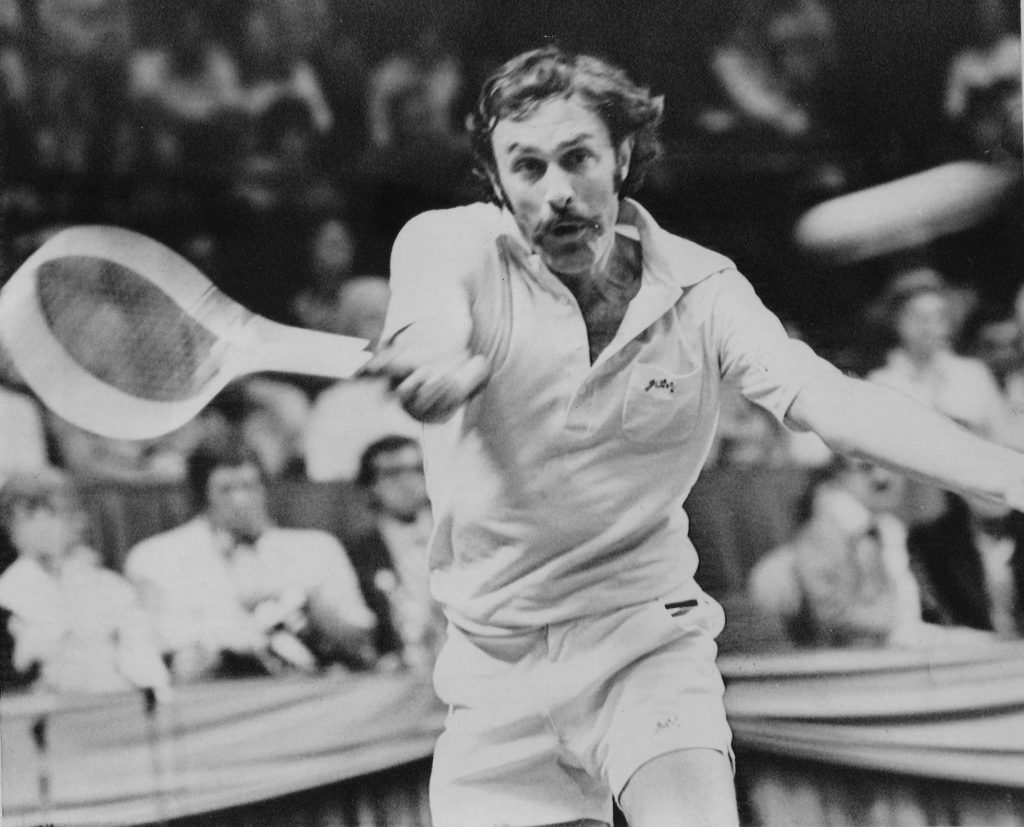After nearly six years of waiting, the Aussie steamroller was back in action. The once-invincible Davis Cup squad from Down Under began its 1973 campaign in Japan, a giant against a minnow for a place in the Eastern Zone final.
Australian captain Neale Fraser wasn’t yet able to call upon his full forces. Rod Laver, Ken Rosewall, and Roy Emerson had commitments elsewhere. But despite a hiccup in Hong Kong on the way to Tokyo, the Aussie side looked strong. Leading the team was 30-year-old Australian Open champ John Newcombe. Slated for second singles was 38-year-old Mal Anderson, who returned to Davis Cup play in 1972 after a 14-year absence.
Not long before, the Davis Cup trophy had a near-permanent home in Oz. Australia won the tournament on 15 of 18 tries between 1950 and 1967, replenishing its stock of stars as one after another defected to the pros. Coach Harry Hopman identified and developed talent like no one else in the world, helped by his nation’s passion for tennis and a federation that prized the Davis Cup above all else. Anderson had played for the Cup-winning side in 1957, Fraser had contributed to titles from 1958 to 1962, and Newcombe had donned the colors from 1963 to 1967.
But when tennis went “Open” in 1968, the Davis Cup didn’t quite follow suit. Professionals were allowed, but not “contract” professionals–the men signed to deals with the likes of the National Tennis League and World Championship Tennis. That included all of the best Australian players: Laver, Rosewall, Newk, Emerson, and more. The second-string Aussies couldn’t compete with the teams from the United States and Romania that dominated the Cup in the first years of the Open era.
Then, in 1973, contract pros were allowed back in. The U.S. was the defending champion, but in a fully open Davis Cup, there could be only one favorite.
In a tie that began on April 21st, Japan became the Aussies’ first victim. Armed with little other than home-court advantage, Jun Kamiwazumi and Toshiro Sakai took on Newcombe and Anderson, respectively. Both played better than expected; neither managed an upset. Kamiwazumi, the Japanese number one, was a particular surprise. He snatched the second set before Newk streaked back, taking 20 of 24 points to secure the third.
The next day, the Japanese doubles pairing of Kamiwazumi and Sakai targeted Geoff Masters, the Australian they considered to be the team’s weakest link. But there weren’t really any weak Aussies on the doubles court. Masters certainly belonged there, leading Newk to a straight-set victory, clinching the tie.
Reclaiming the Davis Cup would require victories in four rounds: The opening tie in Tokyo, the zonal final, an inter-zone semi-final against a European champion, and the final in December. While the Aussies took care of Japan, Vijay Amritraj and his Indian team swept past Pakistan, setting up an India-Australia clash for early May.
Newcombe looked ahead from the moment he stepped off the doubles court. The first words out of his mouth: “One down–three to go.”
* * *
This post is part of my series about the 1973 season, Battles, Boycotts, and Breakouts. Keep up with the project by checking the TennisAbstract.com front page, which shows an up-to-date Table of Contents after I post each installment.
You can also subscribe to the blog to receive each new post by email:
